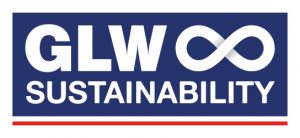Sustainable feed formulation made effortless and simple
Increasingly, farmers and feed producers need to consider the environmental impact of their end products or compound feed they produce and sell. But how does it work in practice? GLW Feeds in the UK is one of the early adopters of MyFeedPrint, a new service to measure the environmental impact of ingredients and finished feed blends in a fast and uncomplicated way.
Livestock production and sustainability are inextricably linked to one another. While the definition of sustainability and the goals attached to it might differ per region or producer, it is obvious that sustainability is no longer the S-word we should be afraid of. We should see it as an opportunity because more sustainable farming practices help to safeguard future food production, give a competitive advantage, decrease costs at multiple levels, and increase overall consumer acceptance at the same time.
Animal feed is fundamental link
Sustainability goals for farmers are often embedded in sustainability programmes from buyers (such as dairy processors or retailers). These goals can range from reducing antibiotic use, increasing soil health, reduce methane output, to reducing the overall carbon footprint of a kg of pork, a tray of eggs and a litre of milk. All these different components of sustainability require a different approach. In the case of reducing the carbon footprint of end products, we know that animal feed is an important and fundamental link that can make a major contribution to the total emissions of animal-based food production. This is because the production of feed ingredients and complete feed involves land use, transportation, high energy feed processing and more.
Coen Smits, global sustainability director at Trouw Nutrition explains: “Feeding animals is a fine art between balancing the nutritional requirements of the animal, the customer needs, price, and the available feed ingredients. This is an art that Trouw Nutrition understands very well. But we also understand that animal feed can have a large impact on the carbon footprint of animal protein. Being a major global feed producer, it is our responsibility to find easy and practical solutions for this that help feed producers and farmers to meet their sustainability goals.”
LCA tools: which one to choose?
Producing more sustainable feed starts with action and knowing the environmental impact of the feed ingredients. Only then, you can adapt and improve things around procurement of feed ingredients and formulation, while – of course – keeping feed costs, animal performance and health in mind. And this is where Life Cycle Assessment (LCA) comes in. LCA calculates the environmental impact (in CO2 equivalent) of raw materials, finished feed, but also per unit of end products. While LCA tools are not new, the application in the animal feed industry has taken a huge flight recently and different LCA tools are flying around fast. For feed producers, the challenge lies in finding the right one that fits their daily operations and needs. It needs to be easy to use, without the need to be an LCA expert.
Smits explains: “The feed producers and integrators we work with often do their own feed analysis with NIR. This data flows in MyNutriOpt, an easy-to use feed management platform that we developed and is used by our customers. Within this tool, we have now added a new feature (called MyFeedPrint) to calculate the carbon footprint of the feed ingredients and complete feed (blends). This way, all relevant feed data (nutritional and carbon impact) is in one place.” MyFeedPrint is built on the European PEFCR Feed Guidelines, and it uses certified environmental databases. Expert LCA knowledge is not needed to use the tool.
50% reduction for UK feed mill
Jess Marshall, Ruminant Nutritionist at GLW Feeds Ltd, is an early adopter of MyFeedPrint. GLW Feeds is a family-owned feed mill in the UK, producing around 240,000 tonnes of feed per year (for ruminants, pigs, and poultry) in one facility. “As a feed company, our aim is always to produce compound feeds that are economically viable and good for the animal, to help increase animal productivity, efficiency and farm profitability. But we also understand that we must consider the environmental impact of some raw materials. We started to change our sourcing policy for some feed ingredients a while ago, but we missed the right LCA tool to help us with that. When Trouw Nutrition took us through the ins and outs of the MyFeedPrint tool, we were immediately impressed by how simple and intuitive it was, and we were eager to start using it. All the calculations are based on certified environmental databases, which are updated regularly. This gives me confidence that the calculations are accurate and that the decisions we make are sound because they are backed up by hard data.

Jess Marshall from GLW Feeds: “We have already achieved up to 50% reduction in environmental impact in some of our dairy rations”
The data from MyFeedPrint is now an integral part of the business and an essential input for the quarterly meetings at GLW Feeds, where management, nutritionists, and the procurement team review buying decisions. Marshall explains: “We have already achieved up to 50% reduction in environmental impact in some of our dairy rations. But more work needs to be done. We are currently looking at our liquid fat supply with a view to going palm oil free for example and want to reduce our power consumption and increase the efficiency of our facilities. MyFeedPrint is a great tool that really helps us to make sound decisions here.
This is just the beginning
When feed companies can offer feed formulations with a lower environmental impact, it will make it easier for their clients (the farmers) to work towards climate-smart farming and comply with current and future sustainability schemes. “But at the same time, these companies need business continuity and should be able to increase production (to meet the increased demand for feed and food in the coming years). We believe that this can go – and must go – hand in hand. It is great to see how the first feed companies like GLW Feeds are reaping the fruits from new services and tools we develop for sustainable farming and feed production. But this is just the beginning. We are continuing to roll out MyFeedPrint and invest in further innovations to bring transparency throughout the entire production cycle from feed to meat, milk, and egg production. This will make emission-reduction solutions more accessible to customers”, Smits concludes.
The total environmental impact of the finished feed is a combination of the impact coming from the individual feed ingredients as well as the impact from feed processing. This is why MyFeedPrint uses three simple modules.
- Module 1: The tool calculates the environmental impact of the feed ingredients based on origin and distance travelled to the feed mill in kg CO2 equivalent per metric ton (MT) of raw material. The feed mill can make a list of their purchased ingredients by searching for it in the ingredient library (such as soybean meal from the US) and add transport information. The data can hence be exported in different file formats for further use (in feed formulation software for example).
- Module 2: The tool calculates the energy consumption of feed processing (per production line or an average for the whole facility). The feed mill can add different production lines such as ‘ruminants pellet line’ and add the output, period and energy and gas consumption. MyFeedPrint then turns this energy consumption for feed processing into carbon impact data (kg CO2 equivalent per MT of complete feed).
- Module 3: The tool combines the data from module 1 and 2 to calculate the total environmental impact of the finished (compound) feed blend (in kg CO2 equivalent per MT of feed). The feed mill can add a new feed (for example ruminant pelleted feed) and then select the feed mill and/or production line that was used, the ingredients and their inclusion rates. The data can hence be exported in different file formats for further use (for reporting to clients for example).

